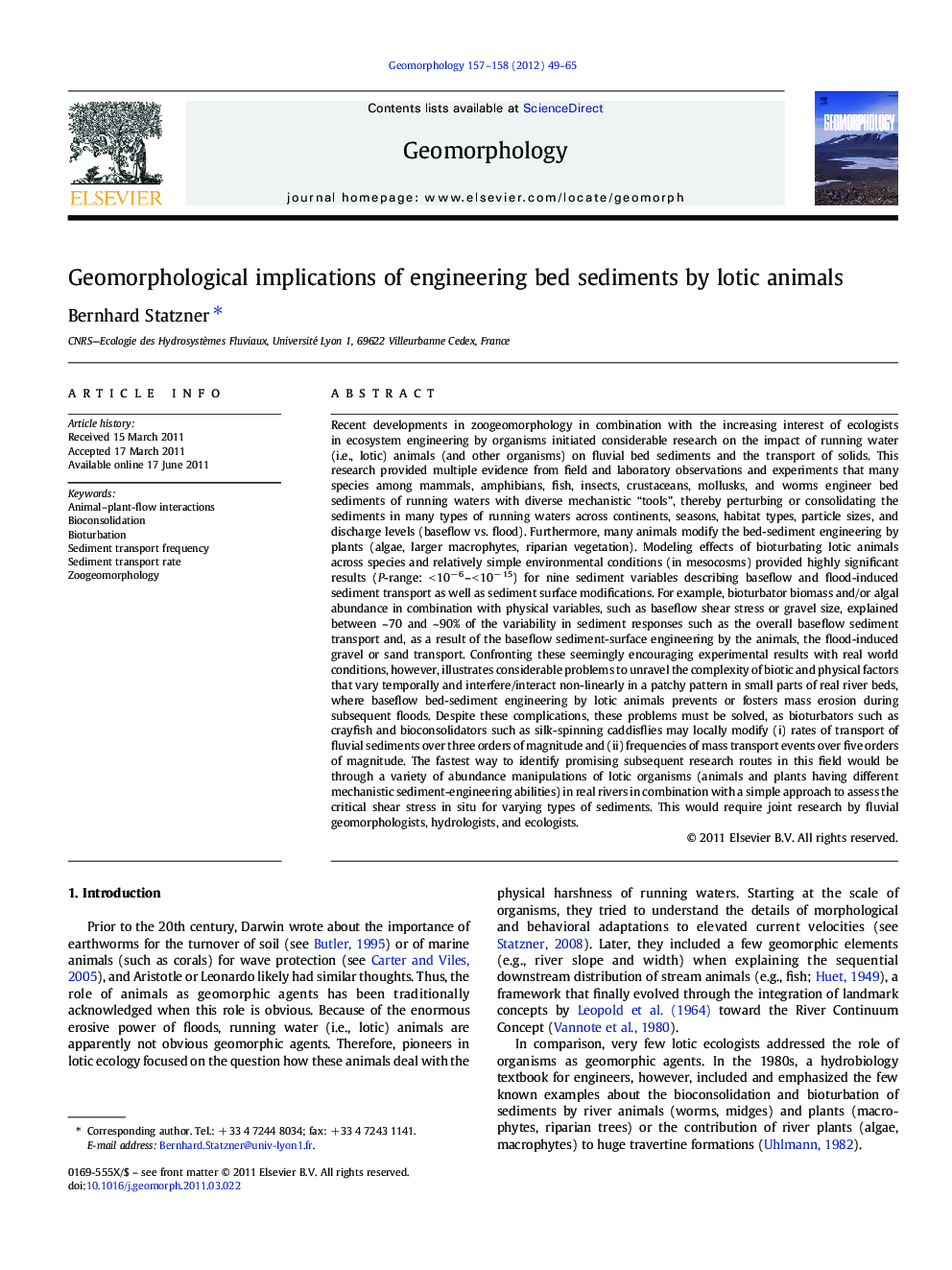| کد مقاله | کد نشریه | سال انتشار | مقاله انگلیسی | نسخه تمام متن |
|---|---|---|---|---|
| 4685232 | 1635480 | 2012 | 17 صفحه PDF | دانلود رایگان |

Recent developments in zoogeomorphology in combination with the increasing interest of ecologists in ecosystem engineering by organisms initiated considerable research on the impact of running water (i.e., lotic) animals (and other organisms) on fluvial bed sediments and the transport of solids. This research provided multiple evidence from field and laboratory observations and experiments that many species among mammals, amphibians, fish, insects, crustaceans, mollusks, and worms engineer bed sediments of running waters with diverse mechanistic “tools”, thereby perturbing or consolidating the sediments in many types of running waters across continents, seasons, habitat types, particle sizes, and discharge levels (baseflow vs. flood). Furthermore, many animals modify the bed-sediment engineering by plants (algae, larger macrophytes, riparian vegetation). Modeling effects of bioturbating lotic animals across species and relatively simple environmental conditions (in mesocosms) provided highly significant results (P-range: < 10− 6– < 10− 15) for nine sediment variables describing baseflow and flood-induced sediment transport as well as sediment surface modifications. For example, bioturbator biomass and/or algal abundance in combination with physical variables, such as baseflow shear stress or gravel size, explained between ~ 70 and ~ 90% of the variability in sediment responses such as the overall baseflow sediment transport and, as a result of the baseflow sediment-surface engineering by the animals, the flood-induced gravel or sand transport. Confronting these seemingly encouraging experimental results with real world conditions, however, illustrates considerable problems to unravel the complexity of biotic and physical factors that vary temporally and interfere/interact non-linearly in a patchy pattern in small parts of real river beds, where baseflow bed-sediment engineering by lotic animals prevents or fosters mass erosion during subsequent floods. Despite these complications, these problems must be solved, as bioturbators such as crayfish and bioconsolidators such as silk-spinning caddisflies may locally modify (i) rates of transport of fluvial sediments over three orders of magnitude and (ii) frequencies of mass transport events over five orders of magnitude. The fastest way to identify promising subsequent research routes in this field would be through a variety of abundance manipulations of lotic organisms (animals and plants having different mechanistic sediment-engineering abilities) in real rivers in combination with a simple approach to assess the critical shear stress in situ for varying types of sediments. This would require joint research by fluvial geomorphologists, hydrologists, and ecologists.
Research highlights
► I review the impact of freshwater organisms on fluvial bed sediments.
► Many species perturb or consolidate sediments with diverse mechanistic “tools”.
► Baseflow bed-sediment bioengineering prevents or fosters flood-induced mass erosion.
► Animals change sediment transport rates over three orders of magnitude.
► Animals change frequencies of mass transport events over five orders of magnitude.
Journal: Geomorphology - Volumes 157–158, 1 July 2012, Pages 49–65